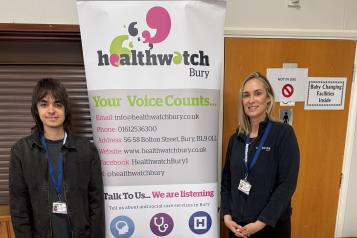Accessible Information Standard

The Accessible Information Standard says that all publicly funded adult social care and health providers, including GPs, hospitals, and care provided by social care services, must identify and meet the information and communication needs of those who use their services.
They also need to keep a record of these needs on a person’s file in a way that’s clear and consistent.
Under the Accessible Information Standard people can specify if they need:
- To be contacted in a certain way (e.g. via email instead of on the phone)
- To receive information in a different format (e.g. large print)
- Communication support for appointments (e.g. a British Sign Language (BSL) interpreter or communicator guide)
- Additional support to communicate (e.g. hearing aids or lipreading)
How does the Standard work?
There are five steps that providers need to take to implement the Standard.
- Identify the communication and information needs of those who use their service.
- Record a person’s communication and information needs clearly and consistently on record, recording their needs not why they have those needs, for example ‘requires a BSL interpreter’ not ‘person is deaf’.
- Have a consistent flagging system so that it is immediately clear whether the person has a communication or information need.
- Share a person’s information and communication needs where appropriate. For example, a GP referring a patient to a hospital including that a deafblind manual interpreter is needed in the referral letter so that the hospital can arrange it.
- Meet the communication and information needs identified. For example, send an appointment letter in braille or book an interpreter for an appointment.
The animated video below provides a step-by-step overview of the Standard. The video includes subtitles and BSL interpretation.


